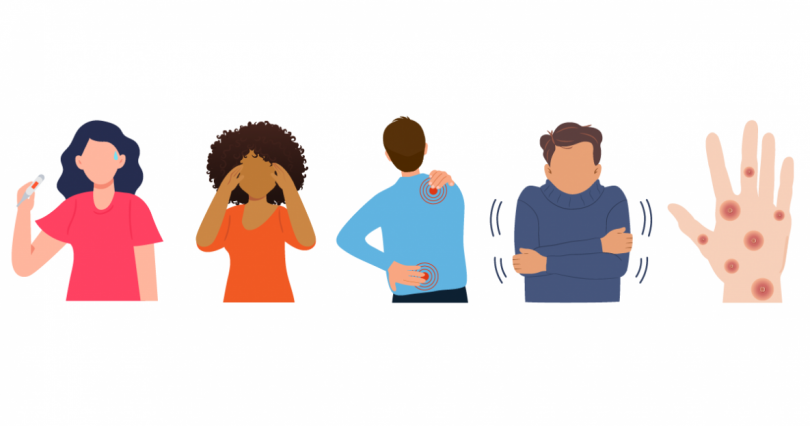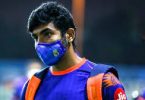A 34-year-old west Delhi resident tested positive for monkeypox, officials said on Sunday and added that a contact-tracing exercise had been launched since the patient did not have a recent history of foreign travel, raising the likelihood that he may have been infected within the country.
The case is the capital’s first and the fourth overall in the country, with all other known cases reported in Kerala among people who returned from other nations.
A day earlier, the disease was declared a global health emergency by the World Health Organization (WHO), but chief minister Arvind Kejriwal and other health officials reiterated there was no reason to panic and adequate arrangements had been made.
“A 34-year-old male resident of Delhi was isolated at Lok Nayak Hospital as a suspected case of monkeypox. A confirmation of the diagnosis has been done by the National Institute of Virology (NIV), Pune. The case is presently recovering at the designated isolation centre at Lok Nayak Hospital. The close contacts of the case have been identified are under quarantine as per the MoHFW (ministry of health and family welfare) guidelines,” said a statement by the Union health ministry.
Following the confirmation, the director general of health services (DGHS) called a high-level meeting on Sunday to discuss preparations and steps to intensify screening across all states and union territories.
“Mostly, preventive and containment measures were discussed during the review as well as clinical management. Also, it is to be ensured that all contacts are tracked and monitored. There is nothing to panic as of now; the government is fully prepared to deal with the situation,” said a senior person in the central government aware of the matter, requesting anonymity.
Kejriwal too assured that the Delhi government’s top resources have been pressed to contain the spread. “The first case of monkeypox was detected in Delhi. The patient is stable and recovering. There’s no need to panic. The situation is under control. We have made a separate isolation ward at LNJP. Our best team is on the case to prevent the spread and protect Delhiites,” the CM tweeted.
Dr Suresh Kumar, medical director at Lok Nayak Hospital, said the patient was admitted to the hospital on Friday with fever and skin lesions. His samples were sent to the National Institute of Virology in Pune, which confirmed the infection on Sunday.
Dr Kumar said the patient did not have a foreign travel history but had visited Himachal Pradesh for a party before his symptoms started. “He has no foreign travel history, but he did travel locally. That is being traced. His treatment and isolation are being done as per government protocol. The condition of the patient is stable,” he said.
Senior health officials said teams are tracking contacts and the travel history of the patient, while his family has been quarantined and their samples too sent for testing.
“There is nothing to panic about. Teams are tracing the man’s contact history to assess how he got infected, considering he seemingly does not have any recent foreign travel history,” a health official said, asking not to be named.
Health experts said that while monkeypox is not as transmissible as Covid-19 infection, authorities need to conduct a thorough investigation tracing the source of the Delhi patient’s infection.
Dr Satish Koul, director (internal medicine) at Fortis Memorial Research Institute, said, “Monkeypox spreads by close contact, skin-to-skin contact and droplet infection. The total duration of this viral disease is around three to four weeks. It presents with fever, body aches, headache and lymphadenopathy — enlarged lymph nodes of the neck and subsequently the patient will develop a rash, which is eruptions starting from the face, palms, and later on involving the hands and feet or legs.”
A viral infection resembling smallpox and first detected in humans in 1970, monkeypox is less dangerous and contagious than smallpox, which was eradicated in 1980. The first symptoms of monkeypox are fever, headaches, muscle pain and back pain during the course of five days.
The disease has mostly been found in African nations, where most spread till now occurred via zoonosis when the virus jumped from animals to humans. The current outbreak, however, is largely being fuelled by human-to-human transmission.
Rashes subsequently appear on the face, palms of hands and soles of the feet, followed by lesions, spots and finally scabs.
According to the US Centers for Disease Control’s (CDC) latest update on July 20, there were 16,836 confirmed monkeypox cases from 74 countries.
While declaring the outbreak a global health emergency on Saturday, WHO director general Tedros Adhanom Ghebreyesus said: “We have an outbreak that has spread around the world rapidly, through new modes of transmission, about which we understand too little, and which meets the criteria in the International Health Regulations.”







